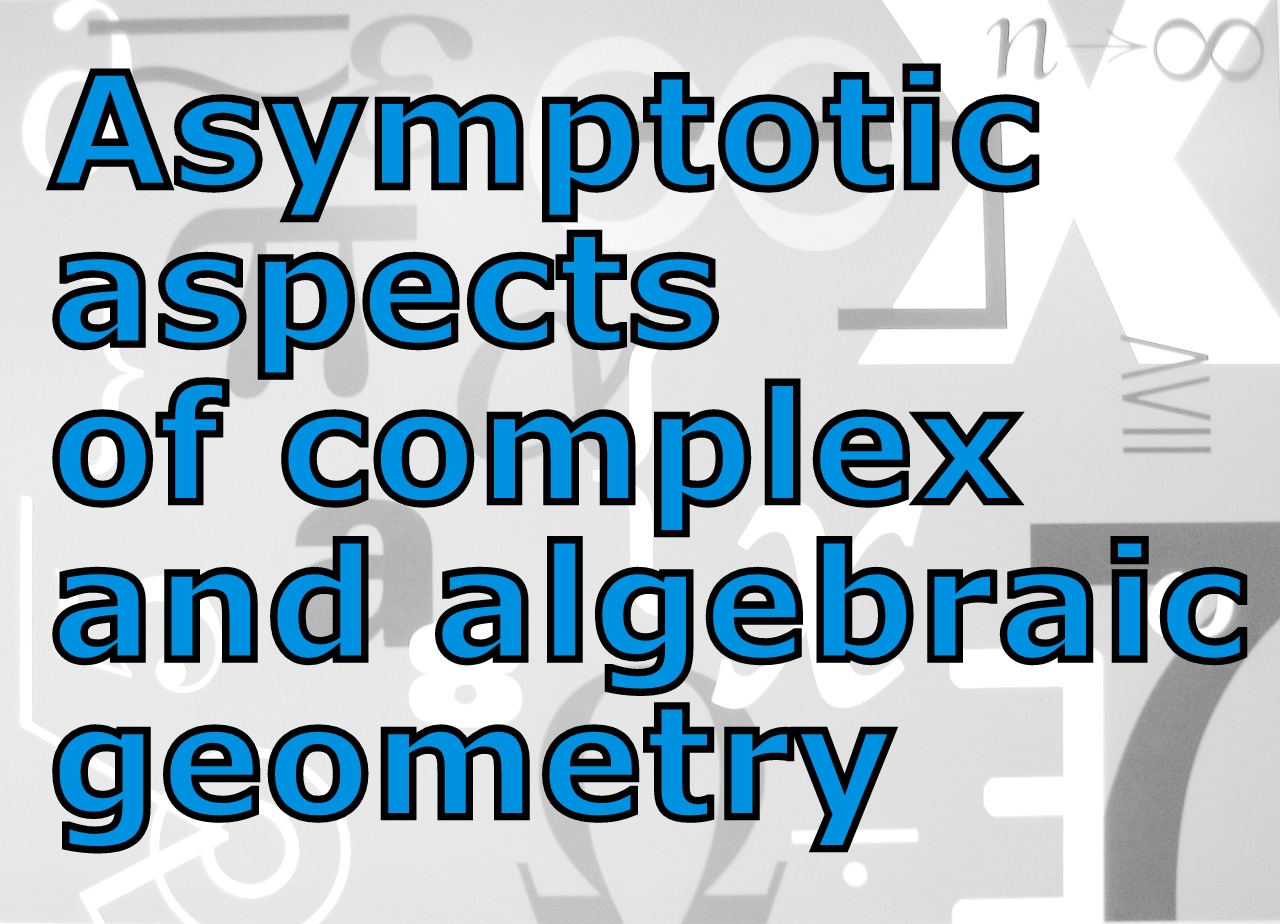Courses
Jean-Pierre Demailly
Kähler geometry, positivity aspects, structure theorems
Abstract.The goal of the talks will be to present a few basic techniques in complex analytic geometry, and their applications to the study of projective or compact Kähler manifolds. Especially, we will present various results concerning positive cohomology classes, some recent vanishing theorems assuming only semipositivity hypotheses, and related structure theorems for compact Kähler manifolds satisfying suitable curvature conditions, e.g. semipositivity of Ricci-curvature. Asymptotic approximation techniques for plurisubharmonic functions and the related intersection theory of closed positive currents play in important role in the proofs.
Robert Lazarsfeld
Asymptotic properties of the defining equations and higher syzygies of projective varieties
Abstract.The equations defining projective varieties have been of interest to algebraic geometers and algebraists both classically and in more recent times. In the early 1980s, Green and others realized that classical results concerning defining equations should be seen as the first cases of more general statements about higher syzygies. This has sparked a great deal of work over the last twenty-five years, bring to bear many geometric techniques including vanishing theorems, vector bundles, and Hilbert schemes, among other tools. Very recently, the have been two new developments concerning the asymptotic properties of syzygies as the positivity of the embedding increases. First, some old questions involving the one-dimensional case have been answered. Secondly, the picture in higher dimensions has started to come into focus. But there remain many open questions. I will survey this circle of ideas.
Steve Zelditch
Bergman kernels, Bergman metrics and their applications
Abstract.This mini-course is about holomorphic sections of high powers of a positive line bundle (L,h) → M over a Kähler manifold. The key analytic objects ar e the Bergman kernels Bk, i.e. the orthogonal projection onto the holomorphic sections of the k-th power of L with respect to an inner product induced by the Hermitian metric h. Bergman kernels induce Bergman metrics of degree k, which are special algebro-geometric metrics induced by holomorphic embeddings into projective space. Over the last 15 years, Bergman metrics have been used to approximate general metrics in an even more precise way ad the space of Bergman metrics (a symmetric space of type SL(N,C)/SU(N)) gives a geometric approximation to the infinite dimensional symmetric space of all Kähler metrics. Geodesics in the space of Kähler metrics are solutions of a homogeneous complex Monge Ampere equation. The purpose of these lectures is to start with the construction of the Bergman kernel and to explain how the geometry of the space of Bergman metrics (e.g. its geodesics) approximates the geometry of the infinite dimensional space.
Talks
Amedeo Altavilla (Università degli Studi di Trento)
On the real differential of a slice regular function: a “contact” aspect of complex and algebraic geometry via quaternionic functions
Abstract. In a recent work by G.Gentili, S.Salamon and C.Stoppato, the authors shows an interesting relation between the character of quaternionic functions of one quaternionic variable which are slice regular and the complex geometry of the 4-dimensional euclidean space minus a parabola. The set of functions considered in their work is restricted to a certain subclass in which the domain of definition has nonempty intersection with the real axis. In this talk I will show that at least the analytic setting is restored if the domain of definition of such functions does not intersects the real axis.
Boris Hanin (Northwestern University)
Pairing of Zeros and Critical Points of Random Polynomials
Abstract. The goal of this talk is to explain why the zeros and critical points of random polynomials in one complex variable come in pairs. The ensembles of random polynomials we study are given by the Gaussian measures induced on the global sections of O(N) by the Hilb_N inner product corresponding to a fixed Hermitian metric h on O(1) over CP^1. Critical points are then computed with respect to a meromorphic connection on O(N) that corresponds to the usual derivative d/dz. The statistical properties of these random polynomials are controlled by the Bergman kernels corresponding to the pair (O(1),h).
Time permitting, we will explain how these results extend to sections of any very ample line bundle (L^N, h^N) over any closed Riemann surface.
Takayuki Koike (University of Tokyo)
On the semi-positivity of a nef line bundle and the neighborhood of the stable base loci
Abstract. Let L be a nef line bundle on a smooth projective variety. We are interested in knowing the existence (and non-existence) of smooth Hermitian metrics on L whose curvature tensors are semi-positive. We give some results on a criterion for the existence of such metrics based on the complex structure of the neighborhood of the stable base loci of L.
Alex Kuronya (Budapest University of Technology and Economics)
Newton-Okounkov bodies and local positivity
Abstract. Newton-Okounkov bodies are a convex geometric tool designed to understand vanishing behaviour of global sections of line bundles from an asymptotic point of view. Here we discuss their relationship to traditional notions of local positivity, including Seshadri constants. This is an account of joint work with various people, most notably with Victor Lozovanu.
Luca Tasin (Max Planck Institute Bonn)
Chern numbers of complex 3-folds
Abstract. In 1954, F. Hirzebruch posed the question about the topological invariance of Chern numbers on complex projective varieties. D. Kotschick in 2012 solved completely the problem and consequently asked the following question: let c be the first Chern class of a 3-fold X, is there a topological bound for c^3?
In this seminar we will discuss an approach to Kotschick’s question based on the Minimal Model Program and we will investigate how the birational properties and the topological properties of X interact. The cubic form arising from the cup product on X will reveal itself a key object for our investigation.
This is a joint work with P. Cascini.
